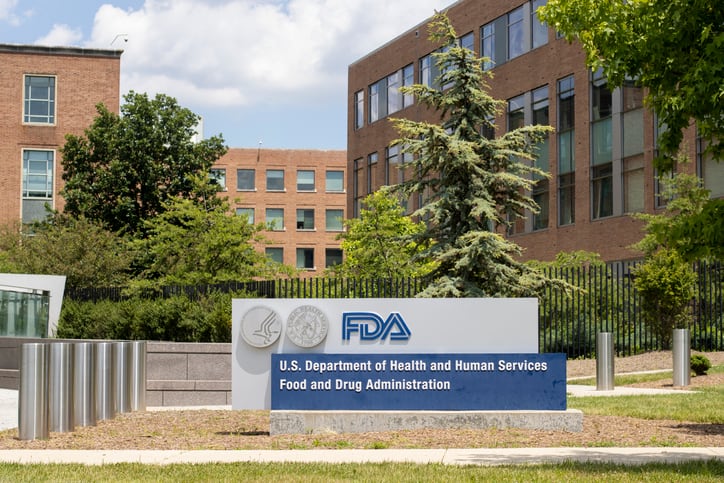Legislators are turning up the pressure on FDA to strengthen the process for determining if substances intentionally added to food are Generally Recognized as Safe and establish a systematic process for reevaluating food chemical safety as politically-fueled concerns mount about the safety of the US food supply.
Late last week, Sen. Edward Markey, D-Mass., and Sen. Cory Booker, D-NJ, introduced the Ensuring Safe and Toxic-Free Foods Act, which follows the reintroduction on July 10 of the Food Chemical Reassessment Act by Reps. Jan Schakowsky, D-Ill, and Rosa DeLauro (D-Conn).
Both bills seek to close what legislators characterize as a “loophole” in the current GRAS process that allows new ingredients and chemicals to be introduced into the US food supply without first notifying FDA or the public.
Industry stakeholders have pushed back against characterizing the GRAS process as a ‘loophole,’ noting it is a notification – not approval – process by which companies can either submit safety data to FDA for assessment or rely on an independent panel of experts to assess the safety of an ingredient. While not mandatory, companies can – and often – submit to FDA data supporting an ingredient’s self-affirmed GRAS status to secure a “no questions” or “good day” letter from the agency. The letter offers manufacturers using the ingredient assurance even though it is not an approval but rather a simple recognition that FDA does not object to a company’s determination.
The most recent proposed legislation from Markey and Booker, with support from Sens. Richard Blumenthal, D-Conn., and Elizabeth Warren, D-Mass., also pushes FDA to review systematically food substances already in the market – reiterating similar directives included in the Food Chemical Reassessment Act that was reintroduced earlier in the month.
The legislation comes days after FDA extended the public comment period for its proposed method of ranking chemicals in the food supply for post-market assessments – an ambitious undertaking that began under former FDA Deputy Commissioner Jim Jones and was picked up under the new administration in May but which has been stymied by budget cuts and criticized by industry stakeholders as thin on details.
Legislation shines light on safety review process
In introducing the Ensuring Safe and Toxic-Free Foods Act, Sen. Booker claimed “hundreds of new chemicals have entered the food supply without the FDA requiring an independent, scientific review of their safety,” which he said, “has led to the use of ingredients that have evidence of carcinogenicity or endocrine disruption in thousands of food products.”
He added: “This legislation will require the FDA to thoroughly review new chemicals before they can be added to foods, finally closing the loophole that has left Americans at risk.”
If passed the bill would require manufacturers submit to FDA GRAS determinations along with supporting scientific evidence, including toxicological data, exposure analysis and proof the substance is not carcinogenic or linked to reproductive or developmental toxicity.
It also would require FDA to post GRAS notices and allow for a 60-day public comment period and authorize the agency to object to GRAS claims if documentation is incomplete, the experts who reviewed the ingredient had conflicts of interest or the evidence does not support safety.
In an effort to avoid regulatory review delays that could chill innovation, the bill also would require FDA to review at least 50 GRAS notices per year “until a full backlog is addressed.”
Consumer advocacy groups, including the Environmental Working Group, The Center for Science in the Public Interest and the Environmental Defense Fund, lauded the legislation.
“The Ensuring Safe and Toxic Free Foods Act is an important step towards fixing the broken GRAS system that allows manufacturers to put food chemicals on the market without notifying FDA,” said Maria Doa, senior director of chemicals policy at the Environmental Defense Fund.
She added: “We must not allow toxic additives to slip through the GRAS loophole and stay in the food supply for decades without getting reassessed for safety.”
Continuous reassessment could create uncertainty for formulators
To that end, the bill would require FDA to reassess the safety of at least 10 food substances or substance classes every three years with priority going to substances that are subject to petitions, regulatory concerns or citizen complaints. It also would require manufacturers to comply with data requests related to the reviews.
This provision echoes a clause introduced in the House days earlier in the Food Chemical Reassessment Act of 2025.
That bill also would require FDA to review every three years at least 10 chemicals added to the nation’s food or food packaging, starting with Tert-butylhydroquinone (TBHQ), titanium dioxide, red dye 40, yellow dye 5, blue dyes 1 and 2, green dye 3, perchlorate, butylated hydroxyanisole (BHA), butylated hydroxytoluene (BHT), trichloroethylene, methylene chloride, benzene, ethylene chloride, propyl gallate, sodium nitrite and sodium benzoate.
Several of these ingredients are under scrutiny at the state level and HHS Secretary Robert F Kennedy, Jr is pressuring food manufacturers to phase out the colors on the list within the next few years. While he has not put forward regulations requiring their removal, several large CPG manufacturers have announced their intentions to remove the ingredients in the coming years.
FDA seeks comments on proposed reassessment review process
FDA also is considering how best to reassess chemicals in the food supply, regardless of their path to market.
Last September, then-FDA Deputy Commissioner for Human Foods Jim Jones acknowledged shortcomings in the agency’s current post-market safety review process for chemicals in foods and introduced a proposed process to systematically review the safety of ingredients already on the market.
In May, agency leadership under the Trump administration proposed a multi-criteria decision analysis to rank chemicals in the food supply for post-market assessment. Last week, it extended the comment period for the proposed method to Aug. 18 from July 18.
In extending the deadline, the agency reiterated its request for feedback on whether its proposed model, including scoring definitions for the public health criteria, are appropriate. It also seeks feedback on new approaches to the toxicity rubric and the weight it should give public health criteria.




